McLaren uses its prestigious ‘1’ badge sparingly, reserving it for the firm’s most advanced and exciting cars. In the past 30 years, only two models have earned this designation: the iconic F1 and the groundbreaking P1.
Now, McLaren has introduced a third, the W1, and, somehow, it makes even the mighty P1 seem almost tame by comparison. The W1 surpasses its predecessor in design, cutting-edge technology, and sheer ability to pull G-forces so intense they’ll practically flatten your internal organs.
Read: McLaren’s W1 Is Their Fastest And Most Powerful Roadcar Ever
You can check out our full story on the W1 in the link abov, where we delve into its power, performance figures, and everything that makes it a game-changer in the hypercar world. However, the W1 is such a highly engineered, complex machine that it would be easy to miss some of its more interesting and unusual features. Below, we’ve compiled 12 key details you might have overlooked about the McLaren W1.
#1 3D-Printed Suspension
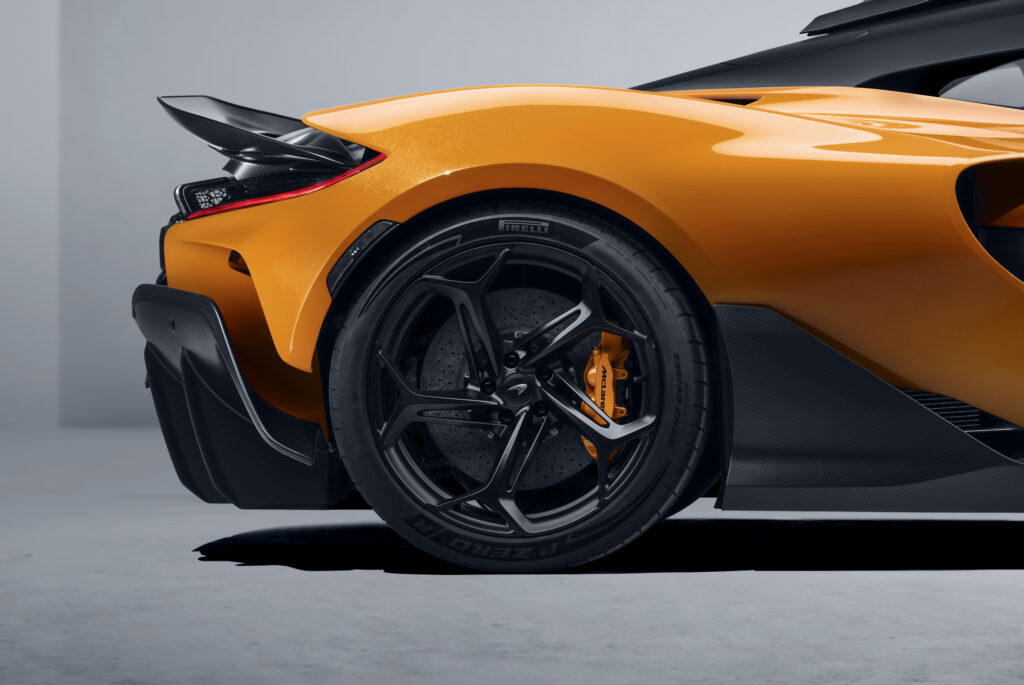
A few automakers have been using 3D printing for a while, mostly for lightweight trim pieces, but more recently an advanced kind of 3D printing called Additive manufacturing is being deployed for far more serious and safety critical components. Like the Bugatti Tourbillon, the W1 features 3D-printed suspension components, in McLaren’s case the wishbones and uprights. And yes, they are still metal, not plastic like your buddy’s DIY home-printed Star Wars figures.
#2 Starter Button On The Roof
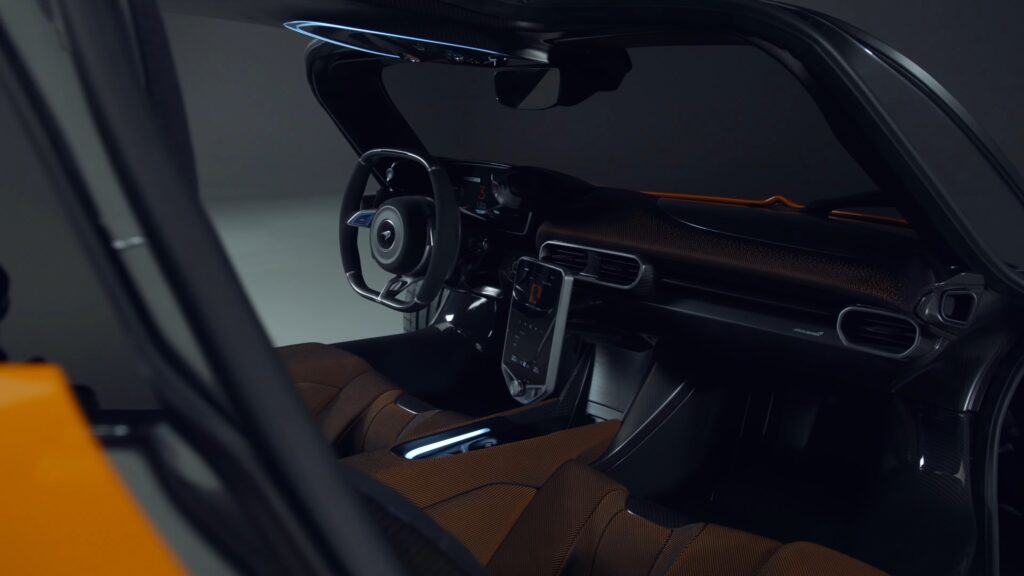
With the exception of a few other hypercars like the Bugatti Tourbillon, the only thing that can keep pace with the W1 on a runway is a fast airplane. So it seems fitting that McLaren has fashioned an aircraft-style overhead console to house the engine start button, Race mode switch and electric window controls.
#3 What The Hell Is An Anhedral Door?
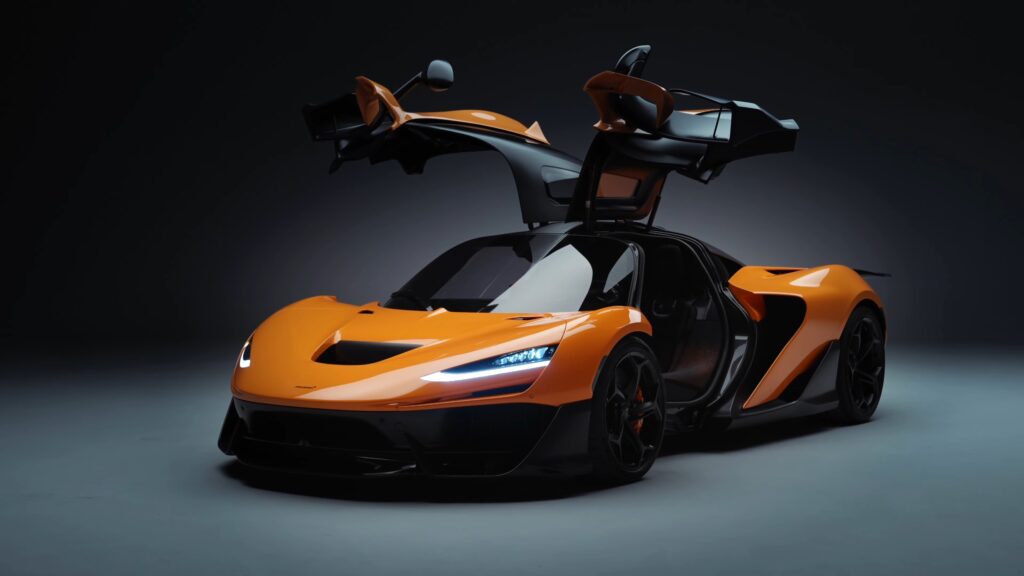
Dihedral doors have been a staple of every McLaren going back to the F1 30 years ago, but they’ve been swapped for gullwing doors on the W1. McLaren being McLaren, they’re not called gullwing doors but anhedral, another term, like dihedral, that comes from the aviation world and refers to the angle of a plane’s wing.
Moving the hinge to the roof frees up space at the leading edge of the door for better airflow along the side of the W1. McLaren even claims it makes the W1 look like this year’s MCL38 Formula 1 car.
#4 E-Reverse
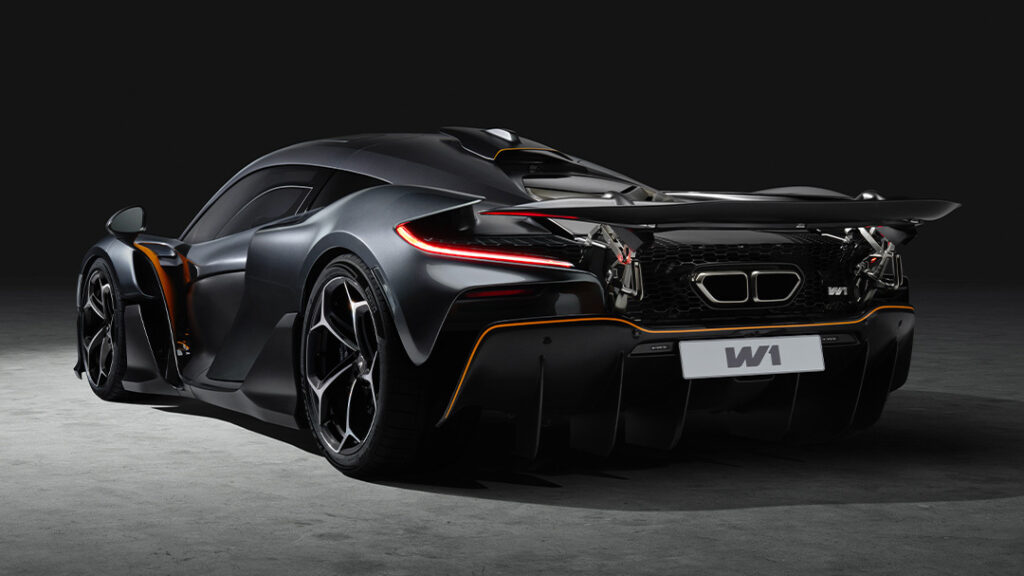
The W1 has an eight-speed dual-clutch transmission, instead of the seven-speeder in the old P1. But one other major difference is the new car uses electric power, not the V8, when the driver needs to back up. We’ve seen E-reverse before on the Artura, as well as Ferrari’s AWD SF90, but in the Italian supercar the front-electric motors did the reversing – the two-wheel drive McLaren applies backing-up torque to its rear wheels.
#5 Hydraulic Power Steering
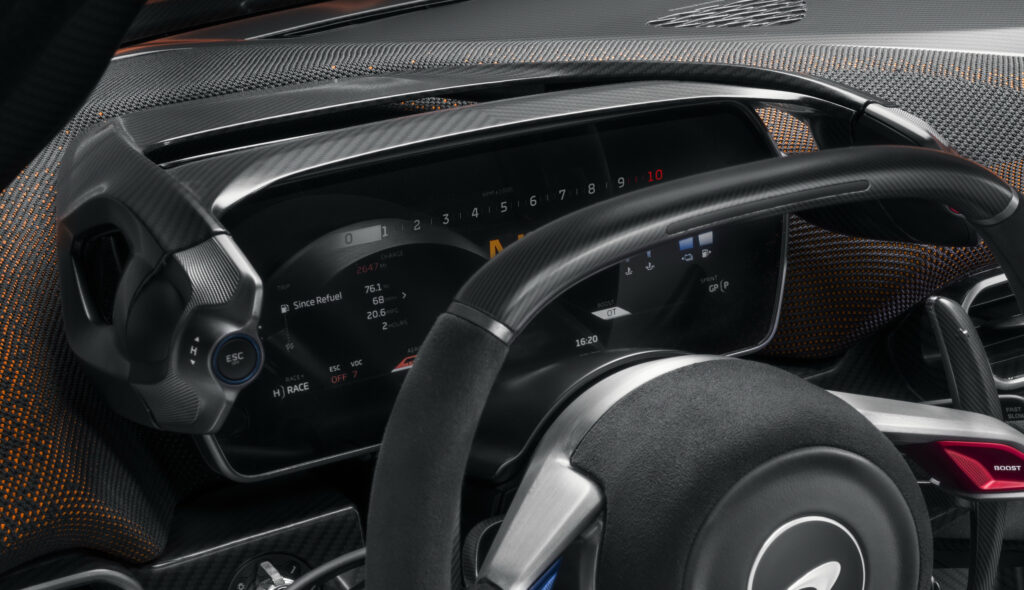
The best thing about the P1 arguably wasn’t its gut-wrenching straight-line speed but the pure, unfiltered steering feel fed to your fingers through its hydraulically-assisted rack. It’s not true to say all electric steering sucks – the P1’s Porsche 918 rival had EPAS and great feel – but McLaren is sticking with hydraulic assistance to make certain the W1 delivers the kind of communication drivers won’t get anywhere else.
#6 Fixing The Seats Made The W1 Shorter
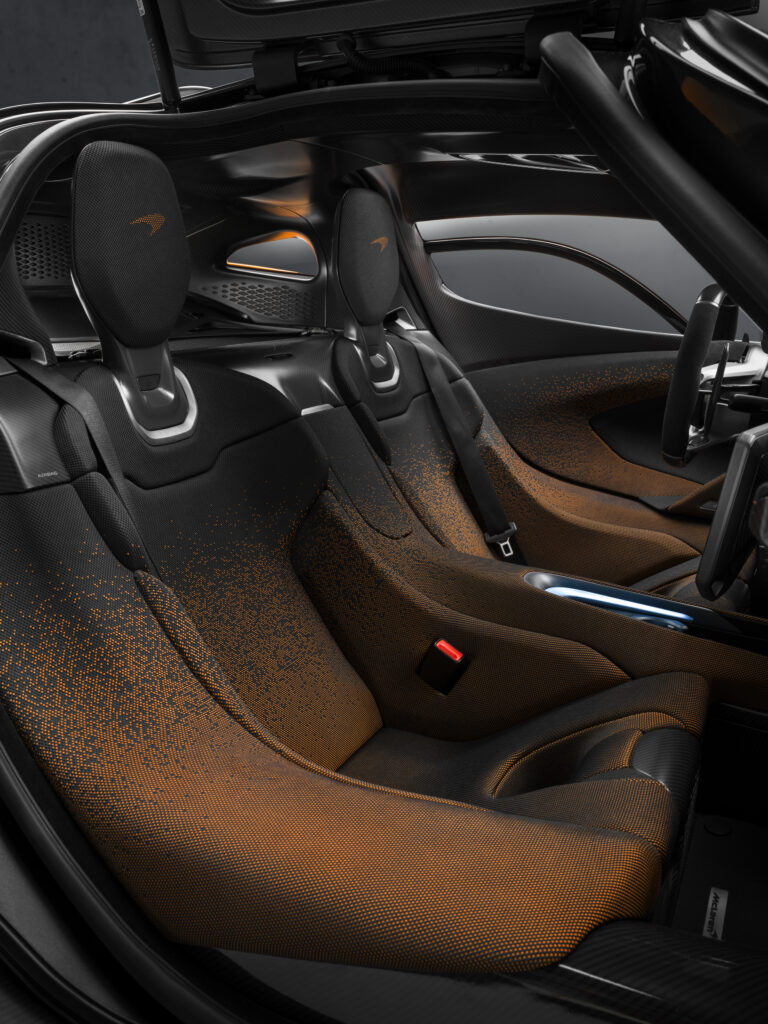
The W1 gets bigger when you get excited, the active ‘Long Tail’ rear wing extending by a massive 11.8 inches (300 mm) when Race mode is engaged. But fixing the seats into the monocoque means the W1 is 71 mm (2.8 inches) shorter than it would have been if it was equipped with a traditional sliding chair.
Like the P1’s old LaFerrari nemesis and the new Bugatti Tourbillon, the W1 features a moveable pedal box to help the driver get comfy. And McLaren says the raised footwell makes drivers feel like they’re in a Le Mans prototype.
#7 Only Two Buttons On The Steering Wheel
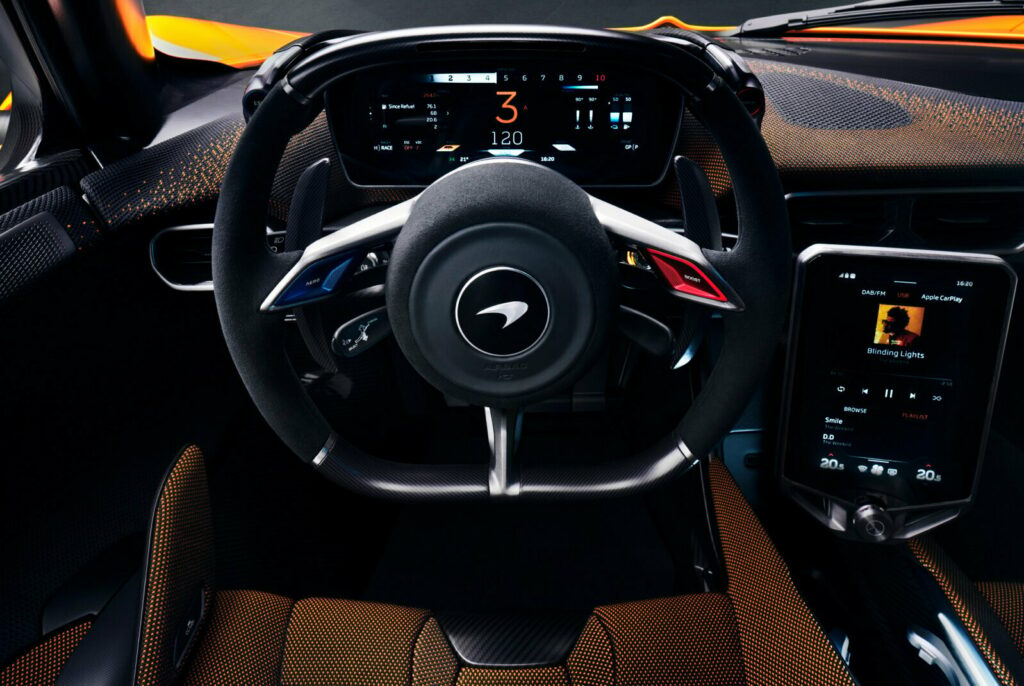
References to McLaren’s F1 exploits and tech synergies are everywhere in the W1 press material, but there’s one area where designers resisted the Formula 1 influence, and that’s the steering wheel.
While McLaren’s Aston Martin and Mercedes rivals splatter buttons all over their hypercar’s wheels, the W1’s creators have limited themselves to just two F1-style switches: one for the an instant E-Boost function and another to activate the Drag Reduction System (DRS).
#8 Wafer-Thin Carbon Sun Visors
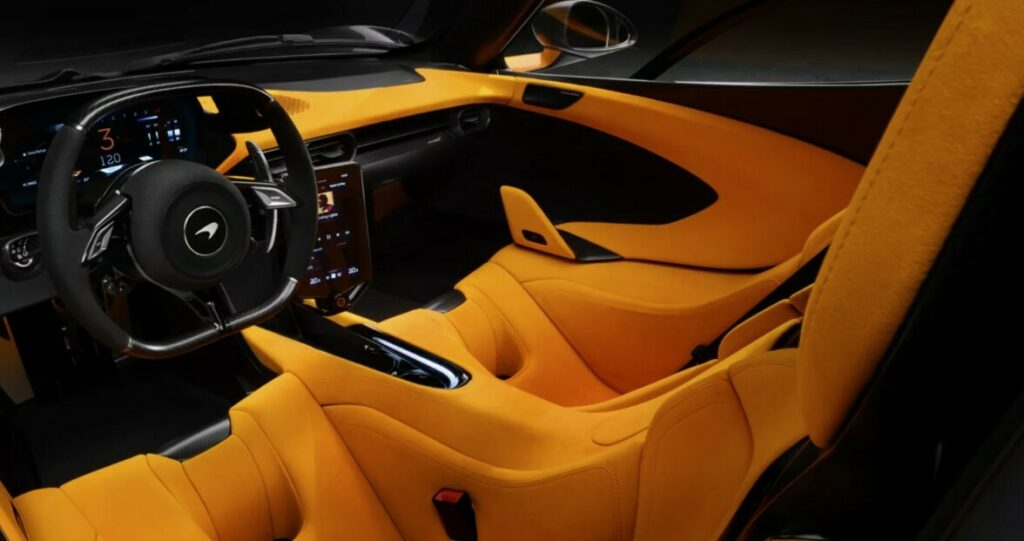
McLaren’s obsession with cutting unnecessary weight extends to the sun visors, which at just 0.1 inches (2.74 mm) are the thickness of three credit cards. They’re also made from carbon fiber, like Visa’s old Black Card and pretty much everything else on the W1.
Slimming the sun visors didn’t exactly transform the hypercar’s overall mass, but it still played a part in McLaren achieving a vehicle weight of 3084 lbs (1,399 kg). That’s without fluids – you can add 220 lbs (100 kg) for a more realistic curb weight figure – but it’s still impressive, coming in just a handful of pounds heavier than a 400 hp (406 PS) Lotus Emira.
#9 No Trunk, But Space For Helmets
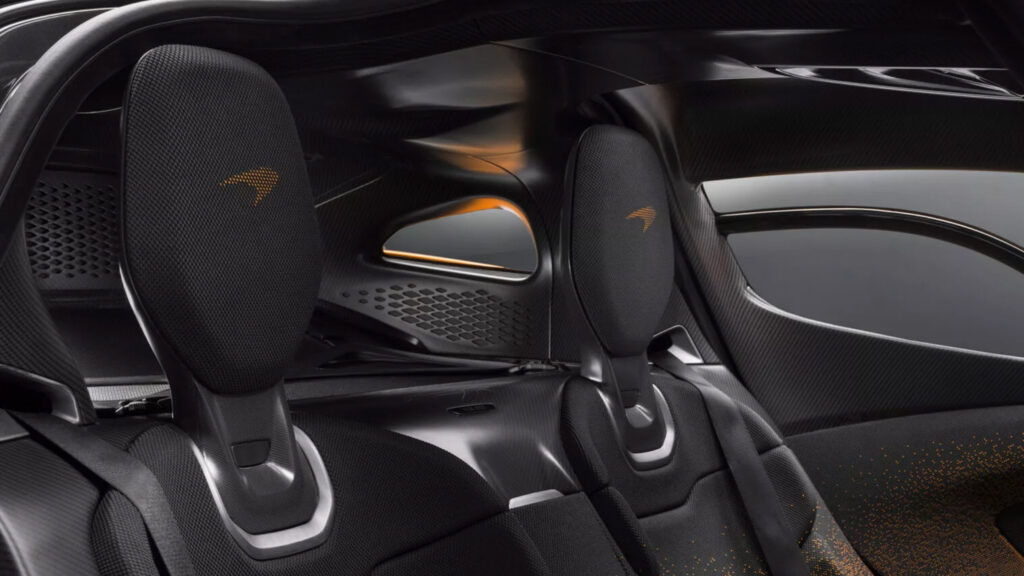
Cargo space isn’t a core priority on cars like the W1, which tend to be used in relatively brief bursts rather than for crossing continents. But there is one important bit of luggage owners might need: a helmet. The W1 has no frunk or rear trunk but McLaren says there’s space for two helmets or a pair of weekend bags on a platform behind the seats that is accessed by flipping the headrests down.
#10 Shares Tech With Huge SUVs
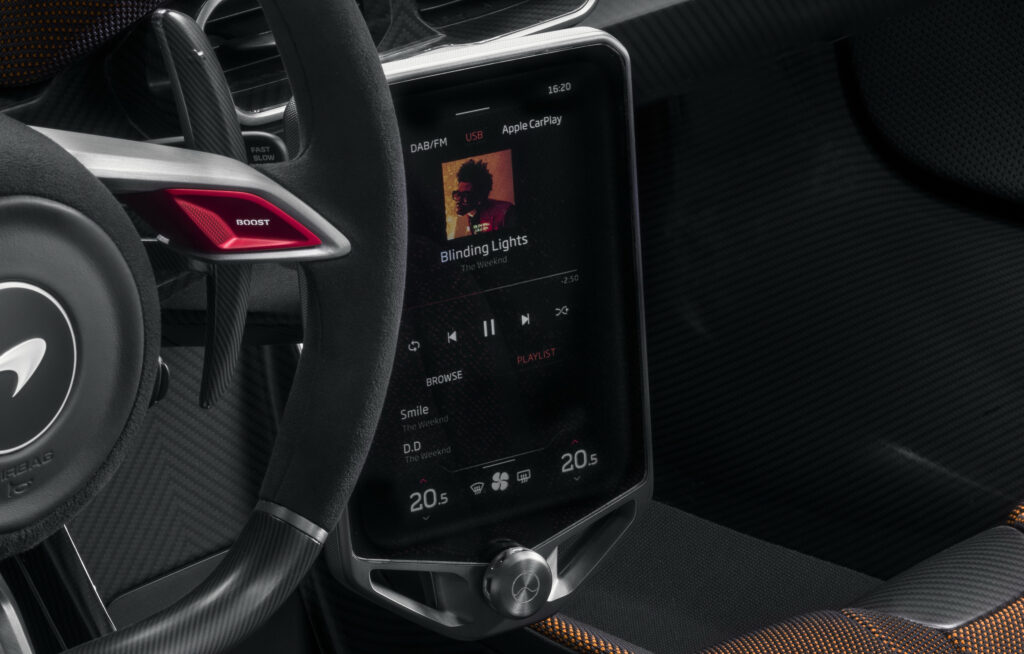
Years ago Lotus found itself in the absurd position of being legally required to fit the Exige with a rear-view mirror even though it showed nothing because the supercharger blocked the view. Since then, digital rear view mirrors have arrived to solve such problems. They’re great for SUV buyers who like to load up their trucks for camping trips, and now the W1 uses the same tech to help drivers see behind – and even includes a chunk of rear wing in the digital view to help place the car. Or just massage the owner’s ego.
Related: Tyreek Hill’s Viral McLaren Stop Results In Miami Cop Being Put On Leave
#11 Same Capacity, But New V8
Although it shares a 4.0-liter displacement with the 3,994 cc M840T V8 in the 750S, the 3,988 cc MPH-8 is all-new and has a fractionally narrower bore and longer stroke. A 9,200 rpm rev limit – versus 8,500 rpm for the older-tech 750S – makes it McLaren’s most spin-happy road car engine yet. The new V8 also does away with a traditional externally-mounted crankshaft damper for an internal viscous damper with active cooling to help manage those trips to the redline.
#12 Even The engine Is Aerodynamic
Every surface on the McLaren from the roof to the underbelly has been optimized for aerodynamics. Even the placement of the engine came in for scrutiny, Woking’s engineers inclining it at 3 degrees to improve the W1’s overall airflow performance.




